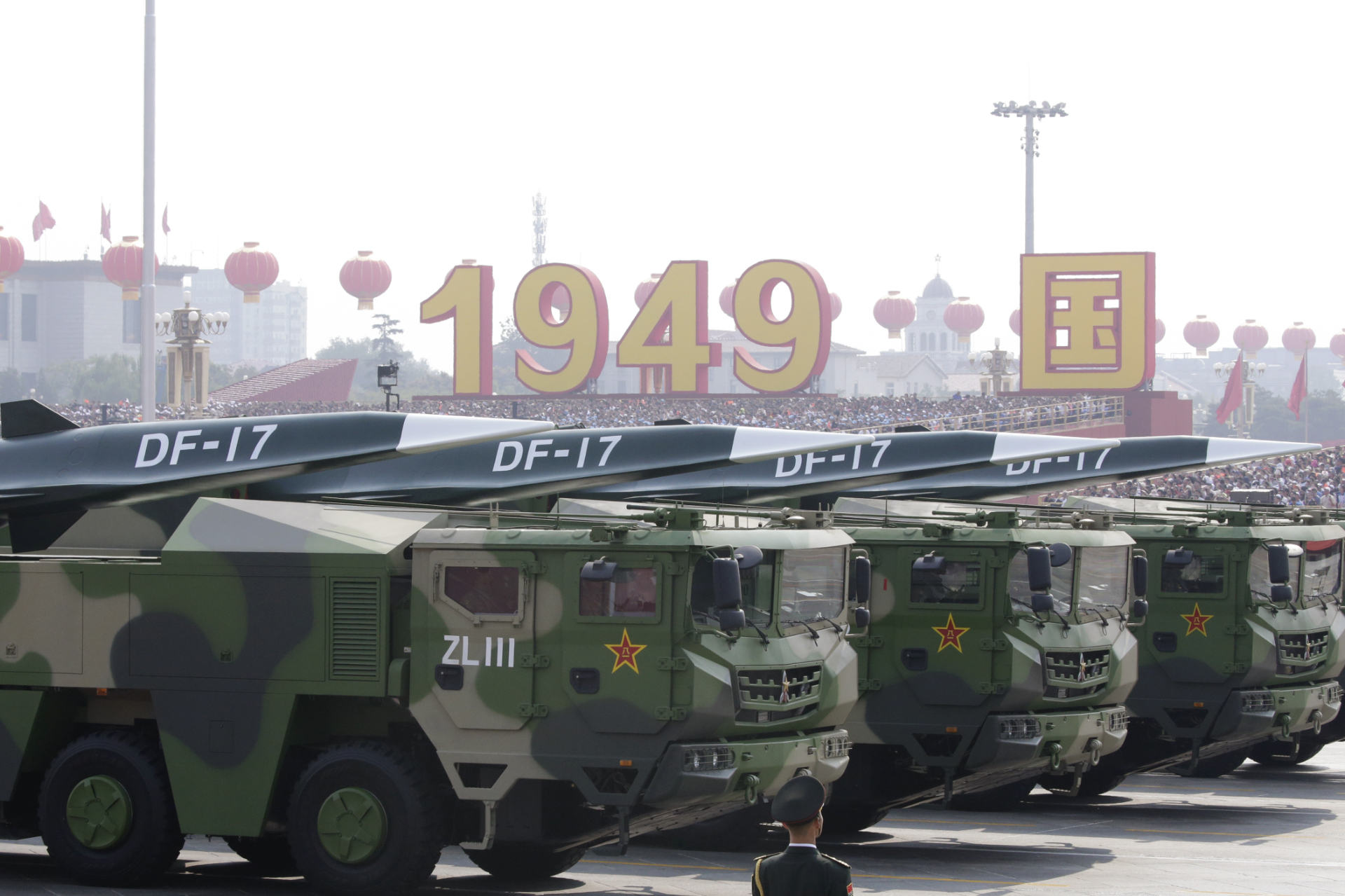China denies report of hypersonic missile test
The Chinese Foreign Ministry denied a Financial Times report that China had tested a nuclear-capable, hypersonic missile in August. Hypersonic weapons technology, which is under development in the U.S., Russia, and China, could have major implications for strategic positions.

Over the weekend, the Financial Times said that a Chinese rocket launch in August had actually been a test of a new and reportedly surprising military capability: a nuclear-capable, hypersonic missile.
- The launch, which was made without an official announcement, involved the same “‘Long March’ rocket” that China uses for lifting satellites and space station modules, but instead “carried a hypersonic glide vehicle which flew through low-orbit space before cruising down toward its target.”
- The test missile “missed its target by about two-dozen miles,” but nonetheless demonstrated technical capability “far more advanced than U.S. officials realized,” three sources told the FT.
- Unlike normal ballistic missiles, hypersonic weapons “do not follow the fixed parabolic trajectory of a ballistic missile and are manoeuvrable, making them harder to track.”
- The U.S. and Russia are developing similar capabilities.
Foreign Ministry denial
Today, the Chinese Foreign Ministry denied that the test had been military. Spokesperson Zhào Lìjiān 赵立坚 said that it had instead been a “routine test of [a] space vehicle to verify [the] technology of [the] spacecraft’s reusability.” He later added that the test had actually been in July, not August.
(His remarks were included in the Foreign Ministry’s English version of the press conference transcript, but this was later deleted for unknown reasons, and the Chinese version has not been published yet. Some of Zhao’s remarks were preserved in this Global Times readout.)
Implications of hypersonic technology
Hypersonic weapons have flown under the mainstream media radar until recent years, occupying a “gray zone” capability between conventional military force and nuclear weapons, United States Naval War College research professor Lyle J. Goldstein wrote in 2019.
However, it should not be a surprise to U.S. officials: Setting aside the question of whether the recent test involved a hypersonic weapon, China’s interest in the technology was “mentioned in [the U.S. Department of Defense’s] annual report for the first time in 2015,” former DOD official Drew Thomson pointed out on Twitter.
- Thomson added that either the U.S. or China changing their strategic position regarding nuclear weapons could be destabilizing in the current environment because the two sides “are not talking about their respective perceptions, concepts, and investment at official, authoritative, senior levels, despite considerable strategic nuclear developments on both sides.”
“The timing isn’t surprising at all,” Tong Zhao, a nuclear policy analyst at the Carnegie–Tsinghua Center for Global Policy in Beijing, told the Guardian, adding that “even if this reported launch was a weapons test, it may be far from becoming an operational capability.”
See also, in Bulletin of the Atomic Scientists: China’s nuclear missile silo expansion: From minimum deterrence to medium deterrence.






